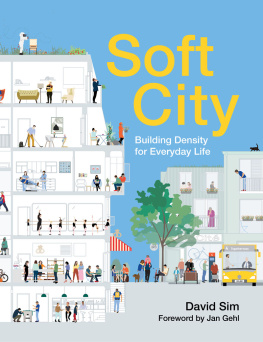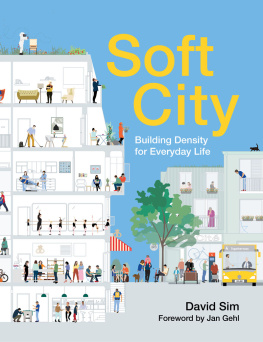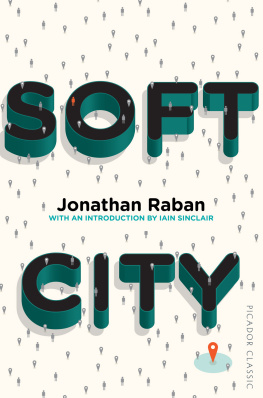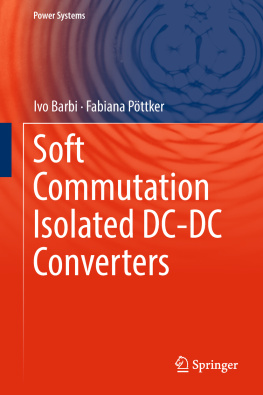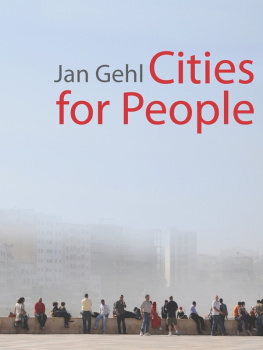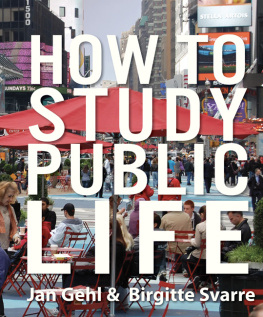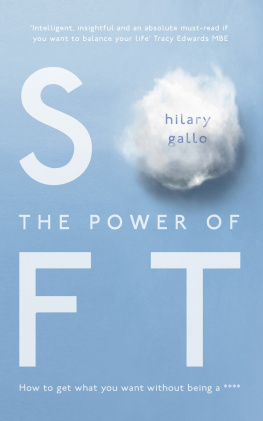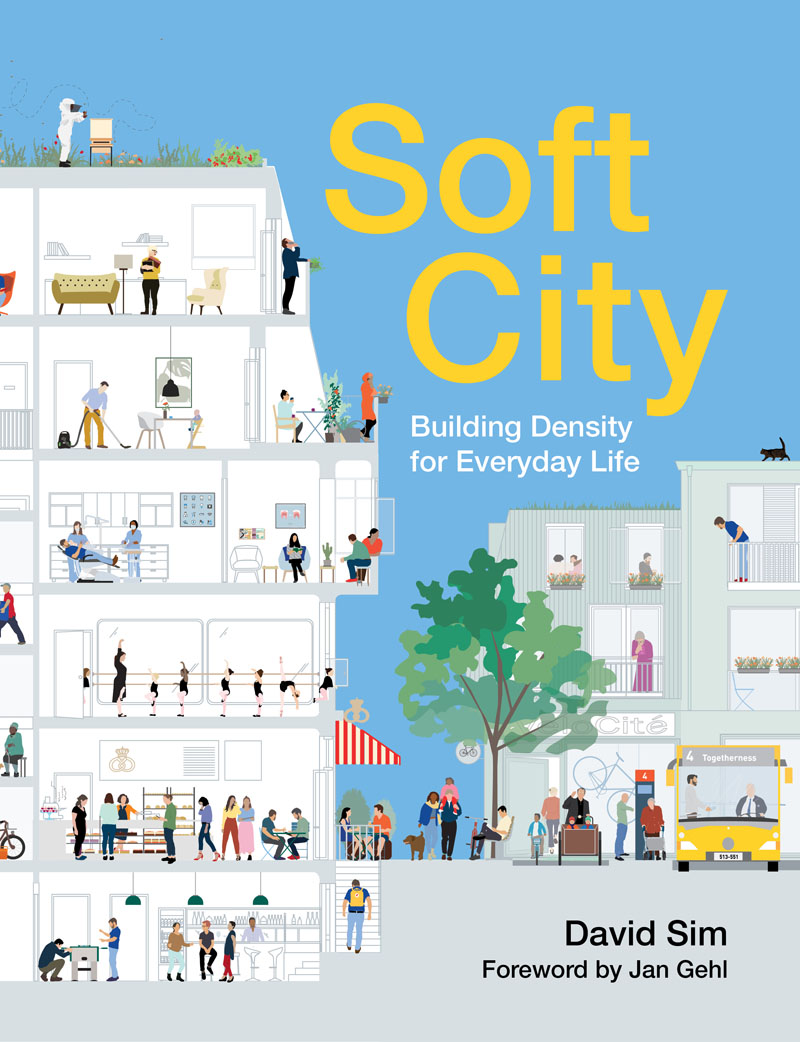

Soft City was originally written in British English. The language has been modified from British spellings and terminology to their US equivalents. Therefore, words such as lift, pavement, and lorry now appear as elevator, sidewalk, and truck. One notable change is in the referencing of different floors of buildings. The British first floor is the second floor in US English.

Copyright 2019 Gehl Architects Finance & Administration ApS
All rights reserved under International and Pan-American Copyright Conventions. No part of this book may be reproduced in any form or by any means without permission in writing from the publisher: Island Press, 2000 M Street NW, Suite 650, Washington, DC 20036, USA.
Library of Congress Control Number: 2018946755
All Island Press books are printed on environmentally responsible materials.
Project team
Birgitte Svarre, project manager
Marie Boye Thomsen, graphic layout
Scott Przibella, architect
Martin Nelson, project assistant
Camilla Siggard-Andersen, research assistant
Anne Louise Brath Severinsen, student assistant
Mads Kjr, student assistant
Elena Balabanska, student assistant
Anna Lindgaard Jensen, student assistant
Arianna Bavuso, student assistant
Samuel Csader, student assistant
Photographs in Soft City are mainly by the author. Special thanks to Lars Gemze for finding some harder-to-find motifs in his impressive collection.
This project was made possible with the financial support of Realdania, Denmark.
Manufactured in the United States of America
10 9 8 7 6 5 4 3 2 1
Keywords: Climate change, communal space, community, Copenhagen, courtyard, cycling, enclosure, Dense-Low, density, human scale, hygge, mobility, nature, neighbors, spatial diversity, transit, walkability
What is the soft in soft city?
Soft is something to do with responsiveness
accommodating, absorbing, supple, pliable, excusing, tolerant, flexible, elastic, extendable, adaptable, changeable, anti-fragile
Soft is something to do with ease
simple, straight-forward, easy-going, effortless, smooth, intuitive, understandable
Soft is something to do with comfort
comfortable, snug, safe, protected, sheltered, peaceful, quiet, hyggelig
Soft is something to do with sharing
sociable, common, mutual, reciprocal, participatory, public
Soft is something to do with plurality
joined-up, hybrid, mixed-use, overlapping, multifunctional, interconnected
Soft is something to do with simplicity
low-tech, low-cost, low-key, modest
Soft is something to do with smallness
human scale, human dimension, individual control, fractal, self-determining
Soft is something to do with appealing to the senses
sensory, delightful, charming, seductive, intriguing
Soft is something to do with calm
peaceful, quiet, cool, low-key, serene, tranquil, mild
Soft is something to do with trust
sureness, clarity, certainty, confidence
Soft is something to do with consideration
gentle, compassionate, sympathetic, empathetic, caring, benign, kindly
Soft is something to do with invitation
welcoming, accessible, permeable, open
Soft is something to do with ecology
a light touch, natural, seasonal, low carbon footprint
Its about ease, comfort, and care in everyday life.
Contents


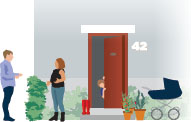
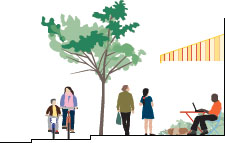
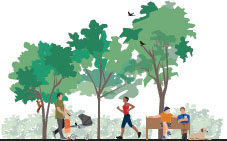


Foreword by
Jan Gehl
In 1933, an exclusive group of European architects and city planners met in Athens to sign the radically game-changing CIAM Charter of City Planning. This charter, often referred to as the Athens Charter, dealt with future architecture and cities, and basically advised that various city functions from now on should be carefully separated: always keep residences, workplaces, recreation, and traffic apart. This approach was, not surprisingly, termed functionalistic, and the whole movement was referred to as Modernism. These ideas not only came to be the guiding principles for architecture and city planning for the decades that followed in the twentieth century, they became totally dominant worldwide. Especially after 1960, the Modernist planning principles came to be completely dominant, as rapid urbanization began to take place around the world. As part of this, the traditional focus on creating cities around spaces for people was changed to focusing on buildings surrounded by leftover spaces. Everywhere, Modernist ideas of freestanding, monofunctional buildings surrounded by vaguely defined no-mans-lands became the way to go. All in all, these new principles represented the most radical course change in the history of human settlement. And, by and large, there was never a proper assessment of whether these changes actually worked for mankind. They, in fact, did not work for mankind, as exemplified by the widespread discontent with these kinds of settlements.
In 1998, a new conference of European city planners was invited to Athens. Based on experience from the 65 years since the previous conference, a new Athens Charter was developed that basically says that residences, workplaces, recreation, and communications must never be separated. A complete turnaround!
Seemingly, it took 65 years and numerous Modernist city districts to reach this conclusion. However, a counter cities-for-people movement had been gradually developing for quite a number of years in reaction to the technocratic modernist movement.
In the area of writings and research, the work of Jane Jacobs in New York, and her famous 1961 book The Death and Life of Great AmericanCities, stands out. Jane Jacobs raised the flag and excellently described many of the problems of Modernist city planning. She started to formulate new directions: look out of your windows; look at the people; look at life before you plan and design. In the years and decades following her call to arms, a number of researchers developed and deepened the work concerning how the built form influences quality of life. The New York School, with William H. Whyte, and later with the Project for Public Spaces, continues the work and inspiration from Jane Jacobs. In California, the Berkeley School, with Christopher Alexander, Donald Appleyard, Clare Cooper Marcus, Allan Jacobs, and Peter Bosselmann, contributed much valuable research and insights on people-oriented architecture and city planning over several decades.
Next page
